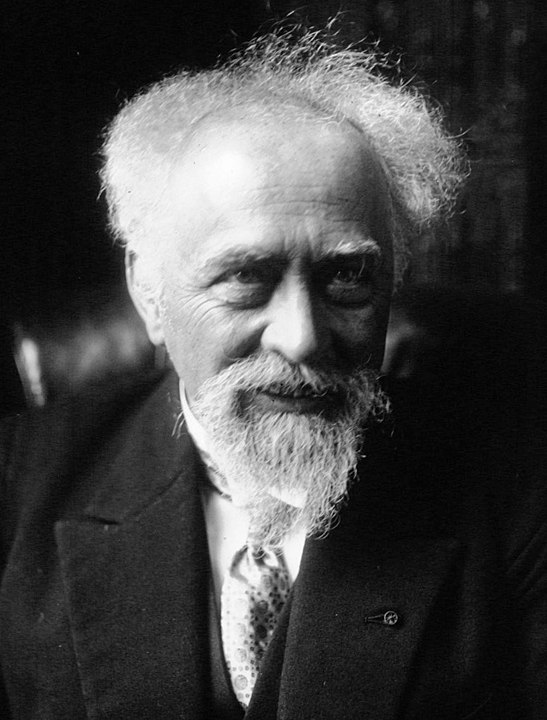Why was Jean Baptiste Perrin Awarded the Noble Prize for Physics in 1926?
Jean Baptiste Perrin: Nobel Laureate and Pioneer in Atomic Theory (1926)
Jean Baptiste Perrin, a French physicist and chemist, made significant contributions to the field of atomic theory during the early 20th century. Renowned for his experimental achievements and theoretical insights, Perrin played a pivotal role in elucidating the nature of atoms and molecules. In recognition of his groundbreaking research, he was awarded the Nobel Prize for Physics in 1926. This article explores the reasons behind Perrin’s prestigious honor and highlights his remarkable scientific breakthroughs.

Brownian Motion and Verification of Einstein’s Theory:
Jean Baptiste Perrin Nobel Prize was primarily awarded for his experimental work on the Brownian motion and his verification of Albert Einstein’s theoretical explanation. Building upon Einstein’s groundbreaking paper published in 1905, which provided a quantitative understanding of the random motion of particles suspended in a fluid, Perrin conducted meticulous experiments to confirm the existence and nature of this phenomenon.
Using a microscope, Perrin observed the erratic motion of tiny particles, suspended in a liquid or gas medium, under the influence of molecular collisions. His precise measurements and statistical analysis provided conclusive evidence for the existence of Brownian motion and supported Einstein’s theoretical framework. Perrin’s experimental verification was crucial in establishing the reality of atoms and molecules, solidifying the foundations of atomic theory.
Avogadro’s Constant and the Determination of Atomic Sizes:
Perrin’s contributions to atomic theory extended beyond the confirmation of Brownian motion. He made significant advancements in determining Avogadro’s constant—the number of particles (atoms or molecules) in one mole of substance. Perrin’s meticulous measurements and calculations using sedimentation techniques provided accurate values for Avogadro’s constant, further solidifying the understanding of atomic and molecular quantities.
Furthermore, Perrin’s work on sedimentation played a key role in determining the size of atoms and molecules. By analyzing the rate at which suspended particles settled under gravity, he could estimate their masses and relate them to atomic sizes. Perrin’s findings significantly advanced our knowledge of atomic dimensions and contributed to the development of atomic models.
Impact on Atomic Theory and Experimental Physics:
Jean Baptiste Perrin’s groundbreaking work had a profound impact on the field of atomic theory and experimental physics. His experimental verification of Brownian motion provided compelling evidence for the existence of atoms and molecules, supporting the emerging understanding of matter at the microscopic level. Perrin’s precise measurements and statistical analyses laid the foundation for subsequent investigations into particle behavior and the development of statistical mechanics.
Furthermore, Perrin’s determination of Avogadro’s constant and his work on sedimentation techniques not only advanced our knowledge of atomic and molecular quantities but also influenced various branches of science, including chemistry and material science. His meticulous experimental techniques and theoretical insights set new standards for accuracy in experimental physics, inspiring generations of scientists to pursue rigorous measurements and empirical investigations.
Recognition and Legacy:
Jean Baptiste Perrin’s Nobel Prize for Physics in 1926 honored his exceptional scientific achievements and his pivotal role in confirming the reality of atoms and molecules. His experimental verification of Brownian motion and his determination of Avogadro’s constant significantly advanced our understanding of atomic theory and the behavior of particles. Perrin’s work continues to inspire scientists, emphasizing the importance of empirical research, meticulous measurements, and statistical analyses in unraveling the mysteries of the atomic world.
Conclusion:
Jean Baptiste Perrin Nobel Prize for Physics in 1926 celebrated his groundbreaking contributions to atomic theory and his pivotal role in verifying Einstein’s theory of Brownian motion. His experimental achievements, including the confirmation of the existence of atoms and molecules, and his determination of Avogadro’s constant, solidified the foundations of atomic theory and influenced experimental physics. Perrin’s legacy serves as a testament to the transformative power of meticulous experimentation and theoretical insights in advancing our understanding of the fundamental nature of matter.




